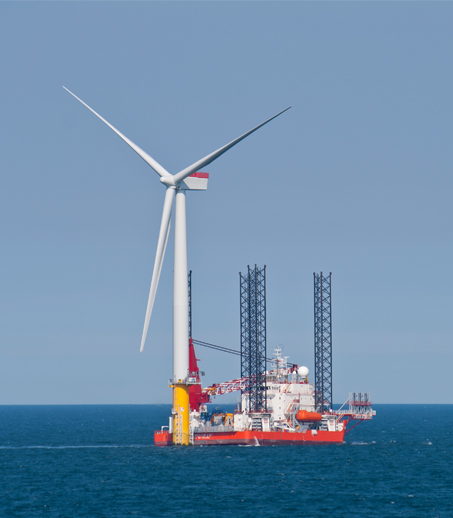Initiatives
Investment Methodology
Basic tools for out-performance
- The investment concept assumes the stock market is less efficient in pricing clean energy stocks than other energy and power distribution companies.
- Since clean energy companies are under-researched, we rely on rigorous research and access to industry specialists to select stocks generating higher-than-market returns.
- Investigative research will incorporate the maximum of tools, achieving an in-depth understanding of industry dynamics. This will include examining competitors, suppliers, and customers as well as financial disclosures and management assessments.
- Other factors to be considered include consolidation within the industries; sales/margin impacts of regulatory and tax changes; and valuation and liquidity effects of new listings on peers.
Research

- Investigative research based on information gathered from suppliers, competitors, clients, and ex-employees
- Connecting and verifying information across a global network of experts, culminating in a meeting with the management
- Analysing the business based on: substitute threats, new entrant threats, competitive rivalry, and customer/supplier bargaining power; and assessing sustainability without government incentives
- Evaluating financial predictors of future growth: sales, sustainability of Ebitda margin, FCF to weigh funding risk, ROCI to measure management quality
- Applying preferred ratios: consistent out-performance of GARP criteria, P/FCF, EV/Ebitda, P/E
Investment horizon: efficiency and declining costs will drive long-term changes; hence, our three-year time horizon for established technologies
Timing
Timing the macro call to maximize returns
Clean energy stocks are an option on economic recovery. We apply correlation metrics with traditional energies and power companies.
Choosing the right point in the cycle
The past few years have shown significant divergences in price performance within the renewable-energy space. Factors like tightening credit markets, changes in commodity prices, technology innovations, and new legislation have caused paradigm shifts in the way companies are perceived.
Taking advantage of arbitrage opportunities
Chinese scaling up of equipment manufacturing of some technologies has shifted the investment opportunities along the supply chain, from equipment companies to developers. A disruptive event like Fukushima can enhance the attractiveness of utility-scale developers over small-scale installers.
Micro Grids
Micro grids are a solution to grid efficiency.
Asset Allocation
Proven technologies
All holdings are quoted equities of proven alternative-energy technologies that offer growth and capital-appreciation.
Limited number of positions
Portfolio limited to a maximum of 25 positions, with no one position exceeding 10% of AUM. Positions are concentrated in well-researched technologies and companies.
Broad geographical diversification
Preferred sub-sectors may develop relatively large exposure beyond the US/EU, e.g. in China, now a significant competitor in clean energy technologies, and in Japan, a newly growing market.
Size of companies
Very wide range with minimum market capitalization of $200M to ensure liquidity.
Slow, smart stake-building
The relative stability of oil prices suggests that energy prices may have bottomed and it’s safer to be “in” than “out” when the market realizes that renewables are sustainable without government subsidies. Three-year capital appreciation strategy requires slow, smart stake-building.
Ideally the interpretation of data points illustrates whether a company is the best reflection of its subsector’s competitiveness and attractiveness. Optimally, the company will reflect a paradigm shift in perception of the technology space.
Risk Management
Reducing risk by trading within the portfolio
Maintaining the balance of a fundamentally good portfolio and volatility risk with watch limits
Risk management system in place
Reasonable liquidity, Stop loss and FX exposure considerations

Project Initiatives
The Africa Museum of Science and Technology
Nemayiana – The Africa Museum of Science and Technology (AMST) has been registered as Africa’s first museum dedicated to science and technology in Nairobi, Kenya.
This museum will educate and inspire a new generation of young African scientists and provide a platform for innovation and entrepreneurship in the region.
It will be a hub for STEM learning and innovation beyond the classroom.

Webinars
Check out our Youtube channel for expert tips and insights.